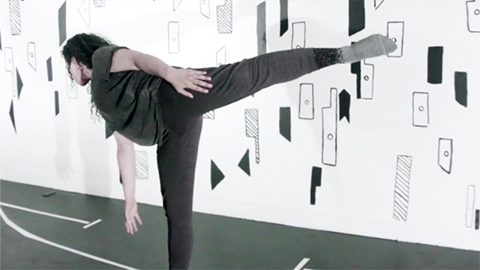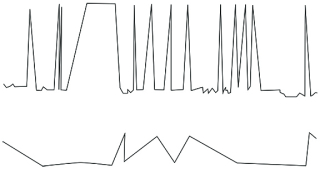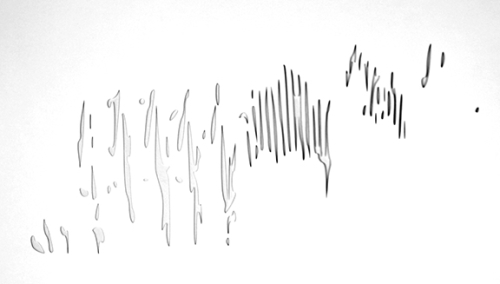
Lou Sheppard is a Canadian artist working in interdisciplinary audio, performance and installation based practice. Of Irish, English and Scottish settler ancestry, Sheppard was raised on unceded Mi’Kmaq territory, and currently lives in K’jiputuk/Halifax. Sheppard graduated from the Nova Scotia College of Art and Design in 2006 and then studied English and Education at Mount Saint Vincent University. In their recent practice Sheppard uses processes of translation and metaphor to interrogate structures of power in data and language. Their work is evidenced through installation, performance and score and often leads them to collaborate with other artists, including musicians, visual artists and performing artists. Sheppard has exhibited work both in Canada and internationally, and was included in the first Antarctic Biennale and the Antarctic Pavilion in Venice. In 2017 they received the Emerging Atlantic Artist Award and in 2018 they were long-listed for the Sobey Art Award. Sheppard is currently Artist in Residence in the Faculty of Education at McGill University.
While at McGill Sheppard is initiating a series of participatory projects including No Word in English and Silent Spring: Tiotia:ke/Montreal. They are also developing a performance installation for the Redpath Museum titled Natural History, and other projects activating sites on McGill Campus. Sheppard is working in collaboration with members of the Faculty of Education and Redpath Museum to develop the Redpath Museum Redpath/STEAM education initiative, a workshop series promoting art in science and technology for youth, led by preservice teachers from the Faculty of Education.
A Strong Desire – Installation by Lou Sheppard
“On Translating the Untranslatable” Article by Arielle Twist
What happens when we try to translate something that is untranslatable, a word for which there is no equivalent in a colonial tongue? Is the gap in the precarious, nebulous space of translation, where the meaning of an original language is lost? Lou Sheppard taught me that this space is called a lacuna, “a place where the assumptive linear is loosened, a place of slippage.” In their installation and performance at the Khyber Centre for the Arts, they propose the question, “Is it possible that the lacuna could be read as queer space?”
When we think of our own queerness we often don’t have the words to describe the ambiguity of our attractions—the ways we feel connected to our bodies or the ways by which we connect and care for other bodies. Sheppard describes queerness as an “un-chartable place in our language and in our identities,” and they explore the possibilities that resonate when queerness bridges these gaps.

Leelee Davis performs in Lou Sheppard’s installation. Photo: Alex van Helvoort
The phrase “a strong desire” comes from the criteria for gender dysphoria in the Diagnostic and Statistical Manual of Mental Disorders (DSM-5), which are still used to “diagnose” transgender individuals so they can access hormone replacement therapy (HRT) and gender reassignment surgeries (GRS) in Canada. Most folks within the transgender community reject the notion that our identities still exist as diagnoses. Our bodily autonomy is disrupted by the ubiquity of Western medicine, and in order to exist and live we have to somehow bypass this gatekeeping.
Sheppard does the work of teasing apart these diagnostic criteria and translating the spaces between each word into labanotation, a notation system used to analyze and record human movement. For the exhibition, Sheppard covered the white walls of the Khyber with angled shapes along one side and words across another. Some of these shapes were shaded, others were hollow or filled in with black paint. They bore a sharpness that commanded attention—the edges were angled with a painstaking precision that filled the room with a dense feeling of control. These shapes became the labanotation.

Read more from “On Translating the Untranslatable”
Requiem for the Polar Regions
The Requiem is an aural record of the shifting masses of sea ice in the Arctic and Antarctic oceans, both the annual melt and reformation of ice, and the long term decline of ice in the Arctic. Using the data provided by the National Snow and Ice Data Centre in Colorado this automated program generates a musical score based on the perimeter and concentration of sea ice in the Arctic and Antarctic. The program maps the coordinates of the ice imagery to a musical scale, generating a distinct composition each day. Ice which reaches further from the poles sounds as lower notes, while ice that sits closer to the pole sounds as higher notes. The score is composed in D Minor.

See Requiem for the Polar Regions on Youtube
No Word in English
Inspired by the multitude of languages spoken by members of the McGill community No Word in English seeks words that have no English equivalent. These words, and their attempted translation are gathered from participants in the project and then printed on posters and placed around the campus. Recognizing that each language is rooted in a distinct ontological system No Word in English is a means of considering how we can and can not translate aspects of our identities and ways of knowing into institutional structures.
Silent Spring: Tiotia:ke/Montreal
Silent Spring is a musical composition based on the songs of ten birds whose populations are declining in the Montreal area. The composition is created by tracing spectrograms of each bird’s call onto a music staff, and then played as music notation. The arrhythmic and discordant notes that result from this translation process become a musical meditation on what is missing from Montreal’s sonic landscape. The composition will be performed by members of the school community, recorded and then installed, with a mural of the graphic score for the piece, in the Faculty of Education building.
